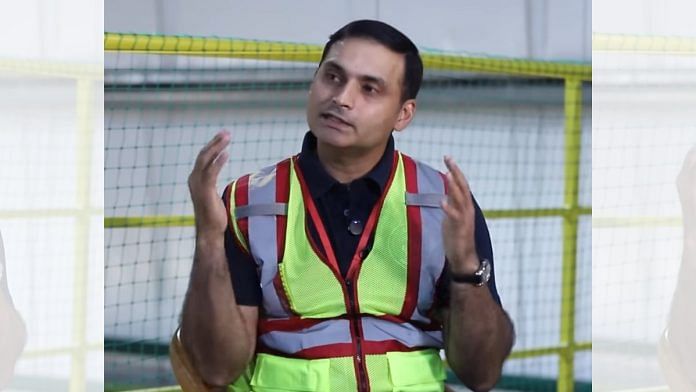The worker then picks the item and places it on a conveyor belt. At the packing station, the item is met by an algorithm tailored to choose the box size that is best for the item, Singh added. At every step, technology is used—from receiving items, packing, and labelling to shipping—to make things easier for customers and workers.
Safety is highlighted as a priority even before speed or reliability at Amazon, Singh said; adding that new workers start with a safety training session.
The temperature and humidity in the facilities are checked to calculate a heat index, with plans in place if it gets too unsafe.
For delivery partners, Singh said, safety regulations include regular vehicle inspections, making sure the partners wear their helmets, watching for speeding with instant alerts, and partnering with ambulance services. Amazon also offers ‘Ashray’ centres where delivery partners can rest during hot weather, Singh explained.
In India, Singh said, Amazon is working towards becoming more eco-friendly by using plastic-free packaging for shipments. Paper tape and special containers are encouraged as an alternative to plastic and other environmentally hazardous items, and many packages do not have extra wrapping, he said. The measures cut down on waste and make packages lighter, reducing the need for diesel, Singh added.
Amazon India, he said, hires workers from nearby villages and other states. The company also provides them with training, which covers safety and job skills, including picking and packing items. The company also focuses on an inclusive environment, employing thousands of people with speech and hearing challenges, said Singh, adding that it trains managers in basic sign language and to use technology to help more fluent communication.
The Amazon delivery system includes fulfilment centres, sort centres, and delivery stations, with ‘smart’ routing algorithms, to make deliveries faster. According to Singh, the company uses different delivery methods, like partnering with local ‘ shops through the ‘I Have Space’ programme, supporting small businesses with the ‘Delivery Service Partners’ programme, and offering an on-demand delivery option, called ‘Flex’.
Amazon believes the Indian market has high growth potential since e-commerce is still a small part of overall shopping, said Singh. On this, he said the company focuses on making customers happy by delivering faster and more reliably, rather than worrying about competitors.
He also highlighted Amazon’s positive impact in the form of creation of 1.5 million direct and indirect jobs, helping sellers and supporting the community by restoring mangroves and lakes. The company, Singh added, also plans to use water responsibly in their operations by 2027.








